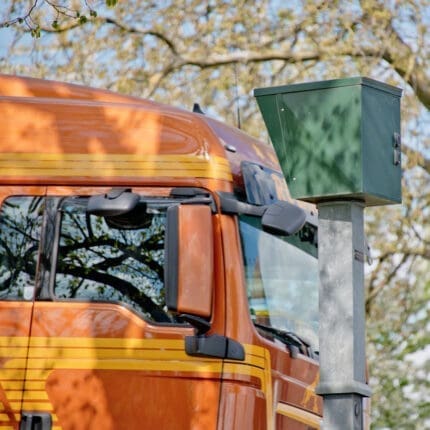- Shop All Documents + Bundles
- FORS V7.1 Document Bundle | Bronze (15 Policies)
- Transport Manager Compliance Pack (10 Policies)
- Transport Manager Compliance Pack (6 Policies)
- Health & Safety Policy Template
- Fuel, Emissions And Air Policy Template
- Operational Security Policy Template
- Serviceability And Roadworthiness Policy Template
- Road Traffic Collision Policy Template
- Counter Terrorism Policy Template
- Load Safety Policy Template
- Vehicle Routing And Scheduling Policy Template
- Driving Standards Policy Template
- Driving Hours Policy Template
- In Cab Technology Policy Template
- Passenger Safety Policy Template
- Complaints And Grievances Policy Template
- Drug And Alcohol Management Policy Template
- Hazard And Risk Identification Policy Template
- VOR (Vehicle Off Road) Policy Template
- Tyre + Wheel Policy Template
- Health & Eyesight Policy Template
- Transport Infringement Policy Template
- Walk Around Check (Defect Check) Tool Box Talk Template
- Transport Manager CV Template
- Social Media Policy Template
- Transport Manager Contract Template
- External Transport Manager Contract Template
- Driver Handbook
Transport UK > Transport Manager Shop > Serviceability And Roadworthiness Policy Template

Passenger Safety Policy Template
£11.00 ex.VAT

Vehicle Routing And Scheduling Policy Template
£11.00 ex.VAT
Serviceability And Roadworthiness Policy Template
£11.00 ex.VAT
It is important to maintain actively maintain a robust Serviceability And Roadworthiness Policy.
⧉ PREVIEW: View our Test Document here to sample the format.
| Brand |
Transport UK |
|---|---|
| Document Format |
PDF [Digital Download] |
| Legislation |
UK Law |
| Transport Manager |
Transport Manager CPC ,Serviceability And Roadworthiness |
| Document Author |
Transport UK Industry Professionals |
| Technology |
Strictly No Artificial Intelligence (AI) Copywriting |
| How To Edit |
Microsoft Word |
| Product Type |
Digital Product [Downloadable] |
10
People watching this product now!
Description
This policy is intended to be a guide to the absolute minimum standards required to actively manage and ensure the serviceability and roadworthiness of all vehicles within the organisation. It covers the essential elements necessary to maintain compliance with legal standards and to promote the safety and reliability of the vehicle fleet. It is the responsibility of the management to ensure this policy is distributed accordingly and adhered to by all relevant parties.
Why do i need this policy?
A Serviceability and Roadworthiness Policy is a crucial document that outlines guidelines and procedures for maintaining the condition and safety of the organisation’s vehicle fleet. This policy is essential to ensure the reliability, safety, and compliance of the vehicles. Here are the reasons why having a Serviceability and Roadworthiness Policy is important:
1. Safety: The primary focus of the policy is to prioritise the safety of drivers, passengers, and other road users. Proper maintenance and regular inspections ensure that vehicles are safe to operate and reduce the risk of accidents due to mechanical failures.
2. Legal Compliance: The policy ensures compliance with relevant laws and regulations regarding vehicle maintenance and roadworthiness. Adhering to these standards helps to avoid legal penalties and ensures the organisation meets national safety requirements.
3. Reliability and Efficiency: Regular maintenance and inspections help to keep vehicles in optimal working condition, improving their reliability and efficiency. Well-maintained vehicles are less likely to experience breakdowns and costly repairs.
4. Cost Management: Proactive maintenance and timely repairs can prevent major mechanical issues, reducing overall maintenance costs. The policy should include strategies for cost-effective maintenance practices and budget management.
5. Environmental Responsibility: Maintaining vehicles in good working order helps to reduce emissions and environmental impact. The policy should include guidelines for minimising the environmental footprint of the vehicle fleet.
6. Maintenance Schedule: The policy should outline a comprehensive maintenance schedule, including regular inspections, servicing, and repairs. Adhering to a maintenance schedule ensures that all vehicles are routinely checked and maintained.
7. Vehicle Inspections: The policy should establish procedures for regular vehicle inspections, including pre-trip and post-trip checks. Inspections help to identify and address issues before they become serious problems.
8. Record Keeping: The policy should require thorough documentation and record-keeping of all maintenance activities, inspections, and repairs. Accurate records support compliance efforts and provide valuable data for continuous improvement.
9. Driver Responsibility: The policy should emphasise the role of drivers in maintaining vehicle serviceability and roadworthiness. Drivers should be trained to perform basic checks and report any issues promptly.
10. Emergency Procedures: The policy should include guidelines for handling vehicle breakdowns and emergencies. Clear procedures for roadside assistance and emergency repairs ensure the safety of drivers and passengers.
11. Quality Standards: The policy should specify quality standards for maintenance practices and replacement parts. Ensuring that high-quality parts and services are used helps to maintain the reliability and safety of the vehicles.
12. Continuous Improvement: A comprehensive policy should include mechanisms for continuous improvement. Regular reviews, audits, and updates ensure that the policy remains effective and relevant in addressing vehicle serviceability and roadworthiness challenges.
A well-structured Serviceability and Roadworthiness Policy is crucial for organisations as it ensures the safety, reliability, and compliance of the vehicle fleet. By establishing clear guidelines and expectations, the policy contributes to the overall success of the organisation’s operations and minimises the risk of accidents and breakdowns. The policy should be regularly reviewed and updated to ensure it remains relevant and effective in managing vehicle serviceability and roadworthiness.
Reviews (0)
Only logged in customers who have purchased this product may leave a review.
How does it work?
We will deliver this digital document (PDF) instantly to you by email when you purchase it.
- Purchase
- Download
- Add your company logo/details
- Adjust/tailor to your requirements
- Be compliant
⧉ Want to try before you buy? View our Test Document here to sample the format in which our documents are made available to you.
Templates you can trust
Our templates are written by transport professionals with a combined 100 years experience in the industry, managing complex and large fleets.
Strictly NO artificial intelligence (AI) copywriting is used in our policies and documents.
You may also like…
Transport Manager Compliance Pack (6 Policies)
Driving Hours Policy, Driving Standards Policy, In Cab Technology Policy, Road Traffic Collision Policy, Tyre + Wheel Policy, VOR (Vehicle Off Road) Policy, Compliance Document Bundles
Rated 5.00 out of 5














Reviews
There are no reviews yet.